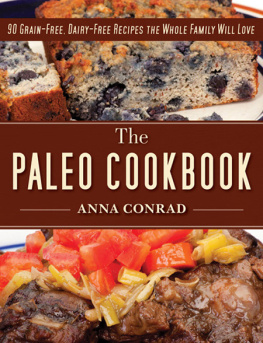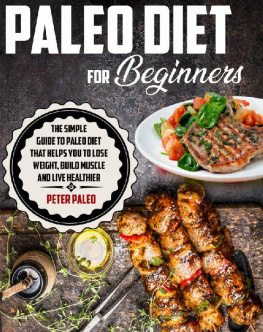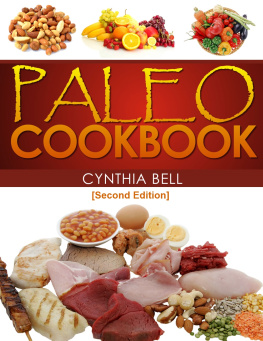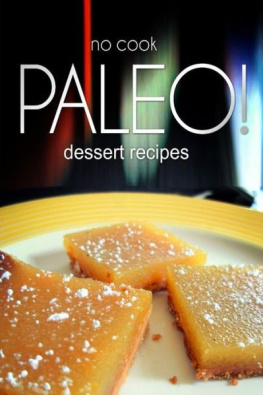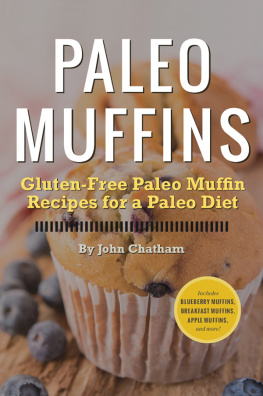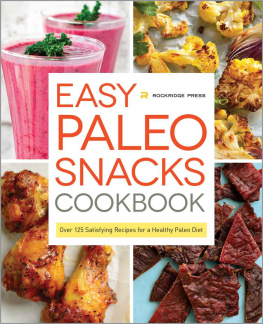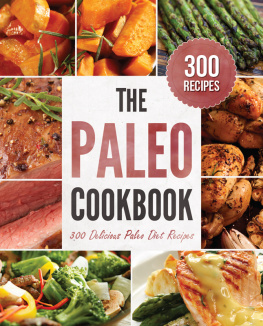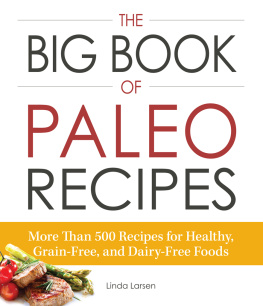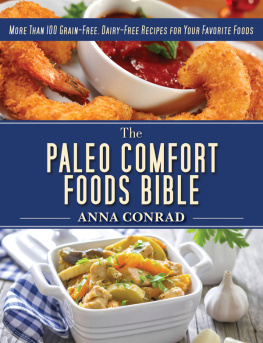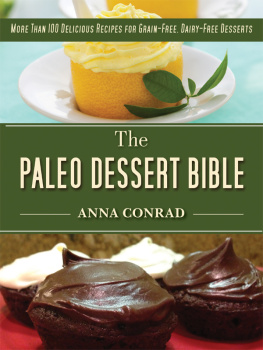

Notice
This book is intended as a reference volume only, not as a medical manual. The information given here is designed to help you make informed decisions about your health. It is not intended as a substitute for any treatment that may have been prescribed by your doctor. If you suspect that you may have medical problems, we urge you to seek competent medical help.
Mention of specific companies, organizations, or authorities in this book does not imply endorsement by the publisher, nor does mention of specific companies, organizations or authorities imply that they endorse this book. Internet addresses and telephone numbers given in this book were accurate at the time it went to press.
Copyright 2014 by Anna Conrad
All Rights Reserved. No part of this book may be reproduced in any manner without the express written consent of the publisher, except in the case of brief excerpts in critical reviews or articles. All inquiries should be addressed to Skyhorse Publishing, 307 West 36th Street, 11th Floor, New York, NY 10018.
Skyhorse Publishing books may be purchased in bulk at special discounts for sales promotion, corporate gifts, fund-raising, or educational purposes. Special editions can also be created to specifications. For details, contact the Special Sales Department, Skyhorse Publishing, 307 West 36th Street, 11th Floor, New York, NY 10018or .
Skyhorse and Skyhorse Publishing are registered trademarks of Skyhorse Publishing, Inc., a Delaware corporation.
Visit our website at www.skyhorsepublishing.com.
10 9 8 7 6 5 4 3 2 1
Library of Congress Cataloging-in-Publication Data is available on file.
ISBN: 978-1-62636-394-6
eISBN: 978-1-62873-832-2
Printed in China
Id like to acknowledge the following individuals for their contribution to this book:
John M. Bray, at exposureproductions.net, for photographing the recipes and making them come to life.
Victoria M. Dilliott at wordsrefined.com for helping to make the content of this book more polished and for ensuring the uniformity of the recipe layouts.
Randall Jenkins for coordinating the preparation, testing, and refinement of the recipes.
Chef Anna clients for taste-testing the recipes.
Your help was invaluable, and the book wouldnt be possible without you!
Chef Anna Conrad
{ Contents }
{ Why I Wrote This Book }
D ustin Mohr, the author of the exercise section in this book, introduced me to the paleo diet in 2011. Dustin owns and operates Mohr Fitness in Johnson City, Tennessee, and he asked me to provide one paleo recipe every day for 28 days to a select group of his clients for a 28-day paleo challenge he conducted. Before I agreed, I researched the diet and determined whether or not I was comfortable with the approach. As with any diet I research and consider for promotion, I personally followed the diet for at least two weeks. Needless to say, I was very impressed with the paleo diet.
Below are a few of the reasons why I chose to write this book:
- The foods are extremely healthy.
- I was not hungry.
- I was very satisfied with the food.
- I lost eight pounds.
- My blood pressure, heart rate, and cholesterol stayed within healthy limits.
I agreed to provide recipes for Dustins challenge and decided to provide prepared paleo meals through my personal chef and catering business for the duration of the challenge. Today, the paleo menu continues to be an offering at my business.
{ The Paleolithic Diet in Summary }
T he paleo diet was first known as the Paleolithic diet and later shortened to paleo diet. Many refer to the diet as the caveman diet or the Stone Age hunter-gatherer diet. The diet is named after the Paleolithic Era, a period of time that lasted about 2.5 million years and ended about 10,000 years ago. Its widely believed that the first humans lived during the Paleolithic Era and derived their nutrition from a diet based on wild plants and animals. Todays interpretation of the Paleolithic diet consists mainly of meat, fish, vegetables, fruits, and nuts, and excludes grains, legumes, dairy products, salt, refined sugar, and processed oils.
The diet was first popularized in the 1970s by gastroenterologist Walter L. Voegtlin. Since that time, the diet has been adapted by authors and researchers who have detailed the concept in several books and academic journals. There are a growing number of critics and proponents of the diet as it gains popularity in mainstream America and particularly in the athletic community.
While researching this book, I interviewed several medical professionals who believe that of all the low-carbohydrate diets to date, this one has the most merit because its roots are found in the earliest form of human beings before the agricultural, industrial, and information ages tinkered with the food chain.
Proponents of Paleolithic nutrition base their beliefs on the premise that humans are genetically wired to best accept the diet of our Paleolithic ancestors because our genetics have scarcely changed since that time. A central argument for the diet is that many diseases that we suffer from today (and our paleolithic ancestors did not) are diseases of civilization. They theorize that a diet predating modern agricultural methods might rid humans of such diseases.
{ How Do I Go Paleo? }
C hoose the highest-quality ingredients that are available to you, that you can afford to purchase, and that you have time to prepare. Ideal ingredients include:
- Coconut oil and full-fat coconut milk with no added ingredients
- Extra virgin olive oil
- Freshly squeezed juices
- Freshly ground nut butters
- Fresh fruits, herbs, and vegetables
- Freshly ground spices
- Grass-fed fresh meats and poultry that are not injected with solutions or flavorings
- Pure sea salt
- Wild-caught fish without artificial additives
- Organic vegetables, fruits, nuts, and seeds
Take an inventory of your refrigerator and freezer. Those items not on the green light or yellow light lists on pages xviixxiv should be donated to a local food bankno exceptions. If you keep them in the house, you are likely to eat them. No, you shouldnt keep them for the kids. Remember, if you think this diet is healthy for you and you shouldnt be eating chips and cookies, then its true for your children, too!
On Saturday or Sunday, look through the recipe section of this book and choose which recipes you will make for the following week. Create a grocery list and go shopping. Make sure you eat before shopping, so that you arent tempted to purchase something not on your list of approved foods.
{ The Truth About Fat }
M edical authorities have long held it true that consumption of saturated animal fat is unhealthy and causes heart disease.
But only 100 years ago there were fewer than 1 in 100 obese Americans. Coronary heart disease wasnt even a medical term in those days. We started seeing coronary heart disease when companies introduced trans fats in products like margarine, shortening, and partially hydrogenated oil.
Shortening-like products were originally used to make soap and candles, but with the increasing use of electric lights, candles sales were on the decline. So the companies that sold those original trans fats made a decision to market them as a healthier fat derived from vegetables and fit for human consumption.
Next page
